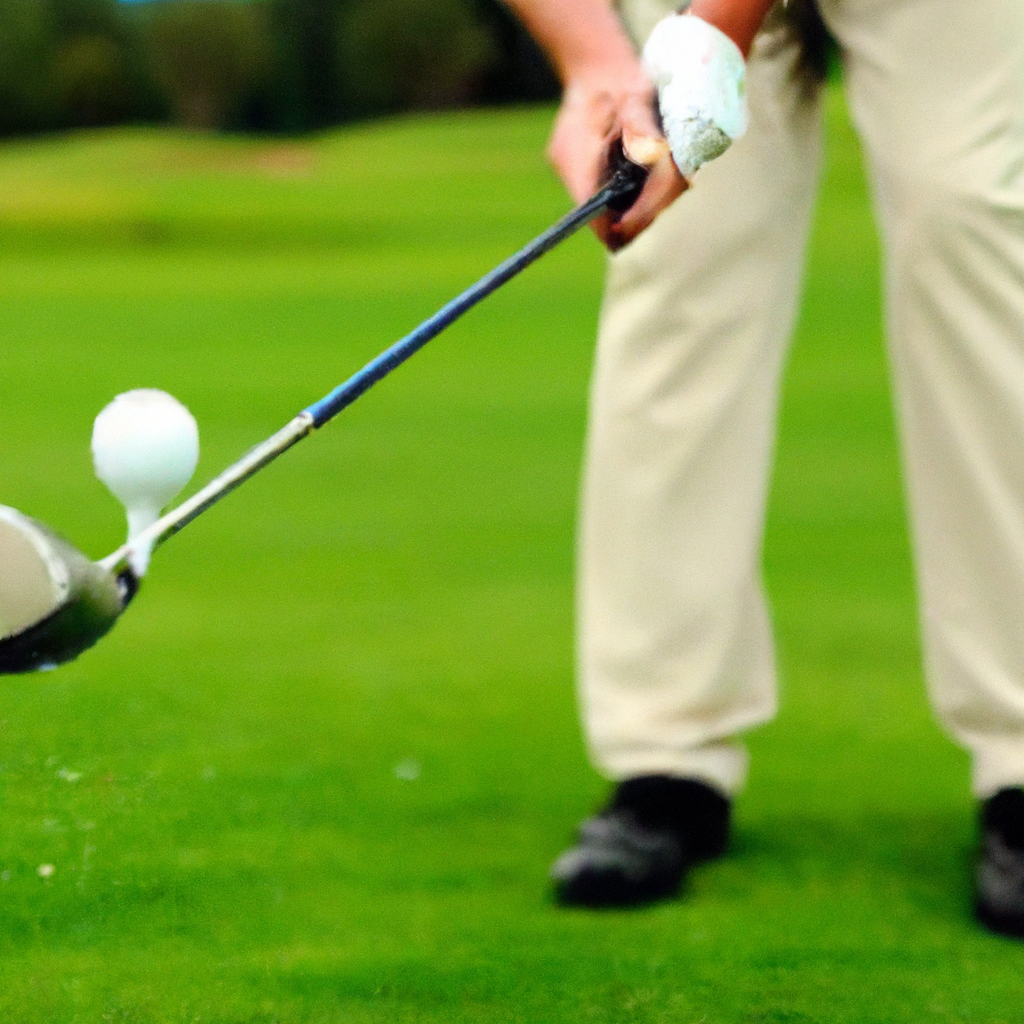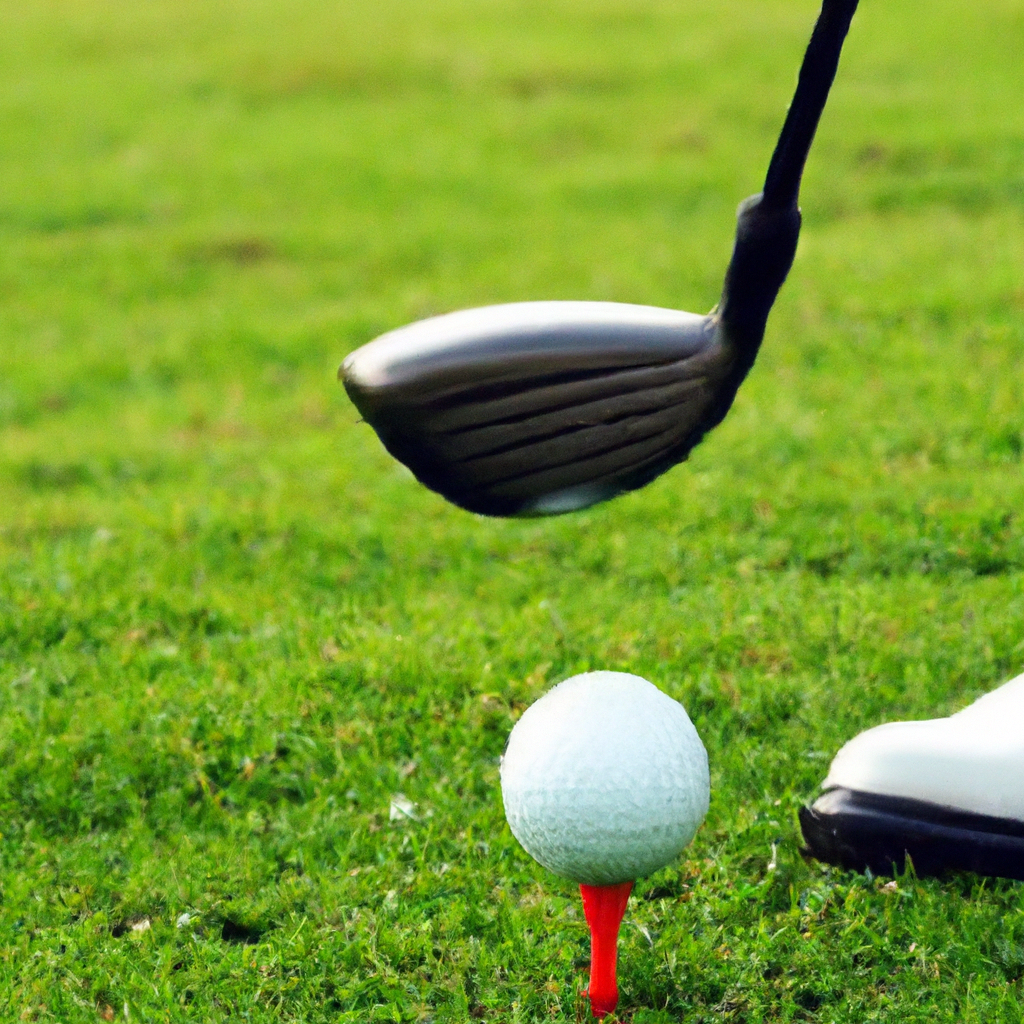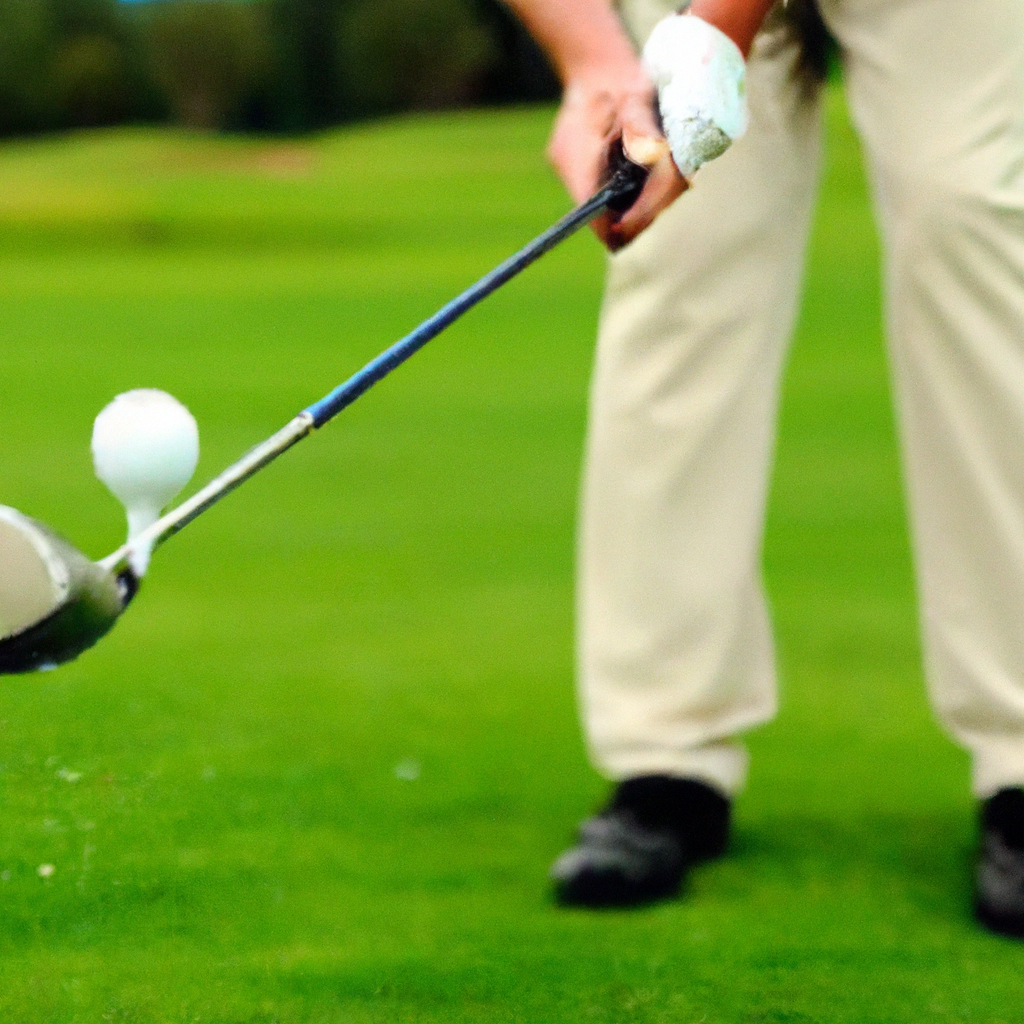Imagine stepping onto the golf course, the sun shining and a gentle breeze in the air. As you prepare to take your swing, you realize that hitting the golf ball lower could greatly improve your game. In this article, we will explore some techniques on how to lower your golf ball hitting. From adjusting your grip to focusing on ball placement, these tips will help you achieve greater control and precision in your golf swings, ultimately reducing your ball’s trajectory. So, grab your clubs, get ready to improve your game, and let’s dive into the world of lowering your golf ball hitting.
Proper Setup
When it comes to lowering your golf ball hitting, a proper setup is crucial. It sets the foundation for a successful shot and helps you achieve the desired trajectory. Let’s look at three key components of a proper setup – grip, stance, and ball position.

Grip
Your grip is the only connection between you and the club, so it’s essential to get it right. To hit the golf ball lower, you can slightly strengthen your grip by turning both hands slightly to the right (for right-handed players). This adjustment helps promote a flatter clubface at impact, resulting in a lower ball flight.
Stance
The width and alignment of your stance play a significant role in hitting the ball lower. A narrow stance can help you maintain more control over your shot. Additionally, aligning your feet slightly open to the target line can encourage a fade or a lower ball flight. Experiment with different stance widths and alignments to find what works best for you.
Ball Position
The placement of the golf ball in your stance can influence its trajectory. To hit the ball lower, try playing it slightly back in your stance. This position encourages a more descending strike, promoting a lower ball flight. Remember, the more forward you position the ball, the higher it tends to launch. Take the time to experiment and find the ball position that allows you to achieve your desired trajectory.
Club Selection
Selecting the right club is crucial when trying to hit the golf ball lower. Here are a few tips to consider when choosing your clubs.
Choose a Lower Lofted Club
Using a lower lofted club, such as a 3-wood instead of a driver, can help you achieve a lower ball flight. The lower loft allows for less backspin and a flatter trajectory, resulting in longer distance and more control.
Consider Hybrids
Hybrids can be a great option for hitting the ball lower. They combine elements of both irons and woods, providing a versatile club that can deliver a lower ball flight when needed. Consider adding hybrids to your set to have more options for lowering your shots.
Use Irons Instead of Woods
When hitting into the wind or trying to keep the ball low, consider using irons instead of woods. Irons have a lower center of gravity, which promotes a lower ball flight. They also provide more control, allowing you to better shape your shots to navigate around obstacles on the course.
Swing Techniques
To consistently hit the golf ball lower, mastering the right swing techniques is essential. Let’s explore three techniques that can help you achieve a flatter, lower trajectory.
Maintain a Flatter Swing Plane
To hit the ball lower, focus on maintaining a flatter swing plane. A flatter swing allows the club to approach the ball from a shallower angle, resulting in less loft and a lower ball flight. Practice swinging on a more horizontal plane to develop this technique.
Reduce Backswing Length
Shortening your backswing can also contribute to a lower ball flight. By reducing the length of your backswing, you create a more compact swing that promotes a controlled and downward strike. Experiment with shorter backswings to find the optimal length for hitting the ball lower.
Control Your Body Rotation
Controlling your body rotation during the swing is crucial to achieve a lower ball flight. Limiting excessive rotation helps you generate less power and spin, leading to a flatter trajectory. Focus on engaging your core and maintaining stability throughout the swing to control your body rotation effectively.
Adjusting Your Shot
In addition to proper setup and swing techniques, understanding how to adjust your shot can significantly impact the trajectory of your golf ball. Let’s explore three adjustments you can make.
Choke Down on the Club
Choking down on the club means gripping it lower than usual. This adjustment effectively shortens the length of the club, reducing the potential for added loft. When you need to hit the ball lower, choking down on the club can help you achieve a flatter ball flight.
Open Your Stance
Opening your stance involves aligning your feet slightly to the left (for right-handed players). This adjustment encourages an out-to-in swing path, promoting a fade or a lower trajectory. Opening your stance can be especially useful when trying to hit the ball lower in windy conditions.
Deliberate Fade or Draw
The ability to intentionally shape your shots can be advantageous when you need to hit the ball lower. A fade refers to a controlled shot that curves gently from left to right (for right-handed players), while a draw curves from right to left. Experimenting with intentional fades or draws can help you navigate around obstacles and achieve a lower ball flight.
Addressing Impact Factors
Understanding the impact factors that influence your golf ball’s trajectory is crucial for consistently hitting it lower. Let’s dive into three critical factors.
Ball Position at Impact
The position of the golf ball at impact directly affects its trajectory. To achieve a lower ball flight, focus on maintaining a slightly forward-leaning shaft and striking the ball before the lowest point of your swing arc. This contact position promotes a downward strike, resulting in a lower launch angle.

Compression and Angle of Attack
Properly compressing the golf ball and controlling your angle of attack are essential for hitting it lower. Aim to compress the ball between the clubface and the ground, creating a crisp strike. Additionally, maintaining a shallow angle of attack, where the clubhead approaches the ball with a shallow downward angle, can help achieve a lower ball flight.
Divot Direction
The direction of your divot after impact can provide valuable feedback on the ball flight. To hit the ball lower, aim for a divot that points slightly ahead of the target. This indicates a more shallow and descending strike, resulting in a lower trajectory.
Mastering Shot Types
Being versatile with different shot types is crucial for successfully navigating the golf course and hitting the ball lower. Let’s explore three shot types that can help you achieve a lower ball flight.
Punch Shots
Punch shots are low-trajectory shots that can effectively navigate under tree limbs or strong winds. To execute a punch shot, position the ball slightly back in your stance, choke down on the club, and make a shorter backswing. Focus on a downward strike and a controlled follow-through for a penetrating ball flight.
Bump and Run
Bump and run shots are excellent for getting the ball low and rolling it towards the target. Use a low-lofted club, such as a 7-iron or 8-iron, and position the ball back in your stance. Make a shorter backswing and focus on a crisp strike that allows the ball to roll out towards the target.
Low Pitch Shots
Low pitch shots are useful for hitting the ball low and stopping it quickly on the green. Open the clubface slightly, position the ball in the middle of your stance, and make a controlled swing. Aim to strike the ball first, then the ground, to create a lower ball flight with added spin for stopping power.
Practice Drills
Consistent practice is key to improving your ability to hit the ball lower on the golf course. Let’s explore three practice drills that can help you develop the necessary skills.
Alignment Stick Drill
The alignment stick drill helps you practice maintaining a flatter swing plane. Place an alignment stick or club along your target line parallel to the ground. Focus on swinging the club beneath or on the plane of the alignment stick throughout your swing. This drill promotes a more shallow attack angle and helps you hit the ball lower.
Impact Bag Drill
The impact bag drill is beneficial for training a more compact downswing and consistent strike. Position an impact bag or a folded towel in front of you, representing the position where the ball would be. Make controlled swings, aiming to strike the bag with a descending blow. This drill improves your ability to compress the ball and achieve a lower trajectory.
Half Swing Drill
The half swing drill allows you to focus on control and consistency. Take a shorter backswing, stopping when the club is parallel to the ground. Make a controlled and deliberate downswing, trying to strike the ball cleanly and achieve a lower ball flight. This drill helps refine your impact position and control of the contact point.
Golf Course Strategies
While technique plays a significant role, strategic decisions on the golf course can also help you hit the ball lower. Let’s explore three strategies to consider.
Play into the Wind
When tackling a strong headwind, it’s essential to keep the ball lower to prevent it from being carried away by the wind. Choose clubs with lower loft, like irons, and focus on maintaining a flatter trajectory to counteract the wind’s effects. Adjust your strategy and shot selection to align with the windy conditions.
Utilize Runways and Bumpers
On many golf courses, you’ll find natural runways and bumpers around the greens and fairways. Take advantage of these features when trying to hit the ball lower. Use the slopes and contours of the course strategically to increase the roll-out of your shots, resulting in a lower overall trajectory.
Strategic Course Management
Proper course management can help you select the right shot for hitting the ball lower. Before each hole, assess the layout, wind conditions, and potential hazards. Plan your shots accordingly, considering the best angles and trajectories for each situation. Sound course management allows you to navigate the course successfully while hitting the ball lower.
Mental Approach
Golf is as much a mental game as it is physical. Adopting the right mental approach can help you focus and execute shots with confidence. Here are three mental strategies to enhance your ability to hit the ball lower.
Visualizing Low Shots
Visualization is a powerful tool for golfers. Before each shot, visualize the trajectory you want to achieve – a low, penetrating flight path towards your target. Imagine the ball flying low and remaining under control throughout its entire path. This mental imagery helps program your brain for executing the desired shot and reinforces your intention to hit the ball lower.
Staying Focused and Confident
Maintaining focus and confidence throughout your round is crucial for hitting the ball lower. Stay present in the moment and avoid getting distracted by previous shots or future outcomes. Believe in your abilities and trust your swing. Confidence breeds success, and a focused mindset allows you to execute your shots with precision and control.
Proper Breathing Techniques
Managing your breathing can help you stay calm, centered, and focused on hitting the ball lower. Take deep breaths before each shot, inhaling through your nose and exhaling slowly through your mouth. This deep breathing technique relaxes your body, reduces tension, and clears your mind, enabling you to execute your shots with greater ease and accuracy.
Physical Conditioning
Physical conditioning plays a vital role in improving your golf game and hitting the ball lower. Here are three areas to focus on.
Improving Flexibility
Flexibility is essential for maintaining a smooth and efficient golf swing. Incorporate stretching exercises and yoga into your fitness routine to improve your overall flexibility. Pay particular attention to stretching your shoulders, hips, and hamstrings, as these areas are crucial for a fluid swing and a lower ball flight.
Strengthening Core Muscles
A strong core is essential for generating power and stability throughout your swing. Incorporate exercises that target your core muscles, such as planks, Russian twists, and medicine ball rotations. Building a strong core not only benefits your overall performance but also helps you control your body rotation and maintain a consistent swing plane for hitting the ball lower.
Maintaining Correct Posture
Proper posture is vital for a consistent and effective golf swing. Focus on maintaining good posture throughout your daily activities and incorporate exercises that strengthen your postural muscles, such as rows and shoulder retractions. By developing good posture, you ensure that your swing mechanics are sound, allowing you to hit the ball lower with greater ease and control.
By following these tips and techniques, you’ll be well on your way to lowering your golf ball hitting. Remember, consistency and practice are key. Embrace a growth mindset and always look for opportunities to refine your skills. Happy golfing!
